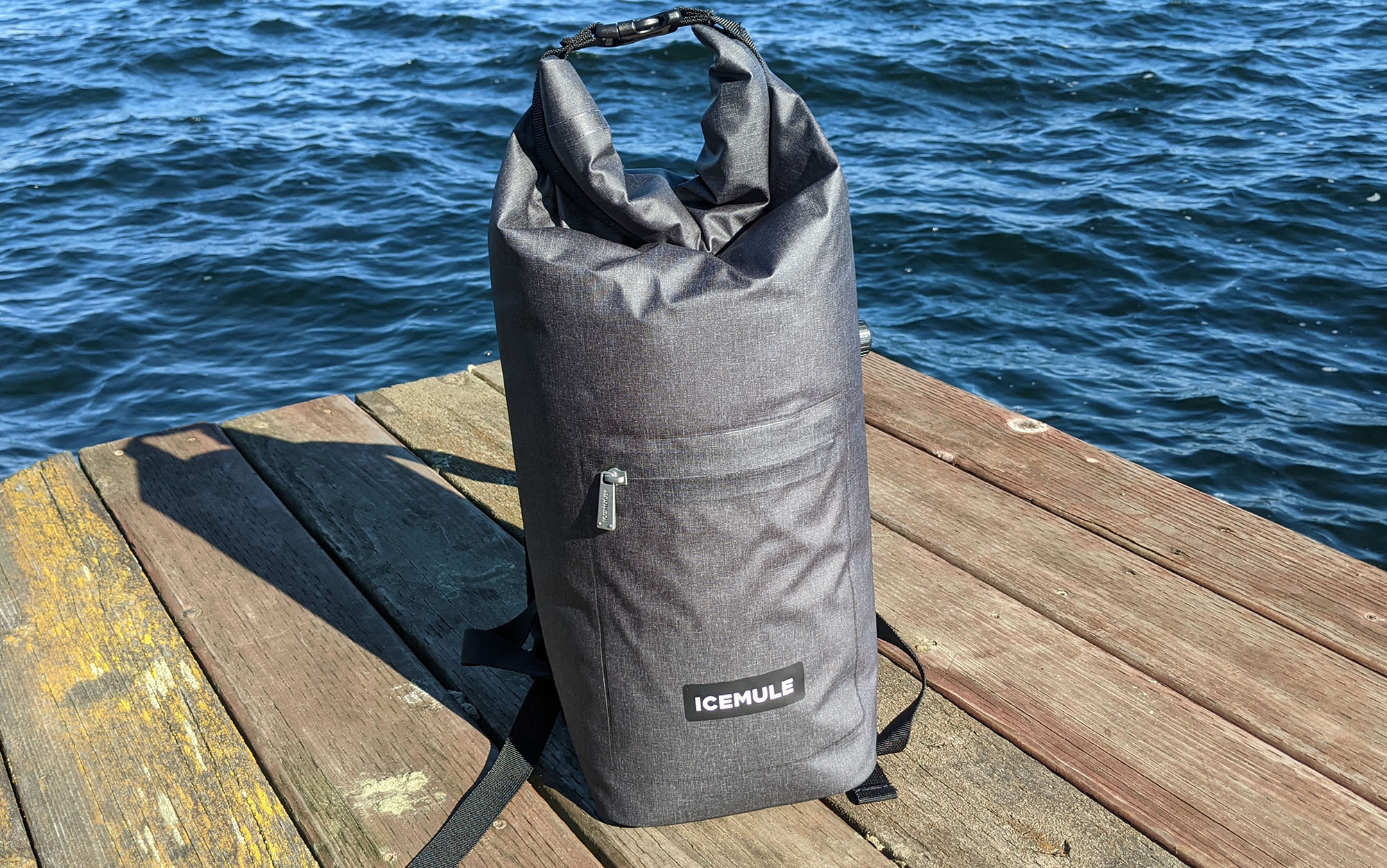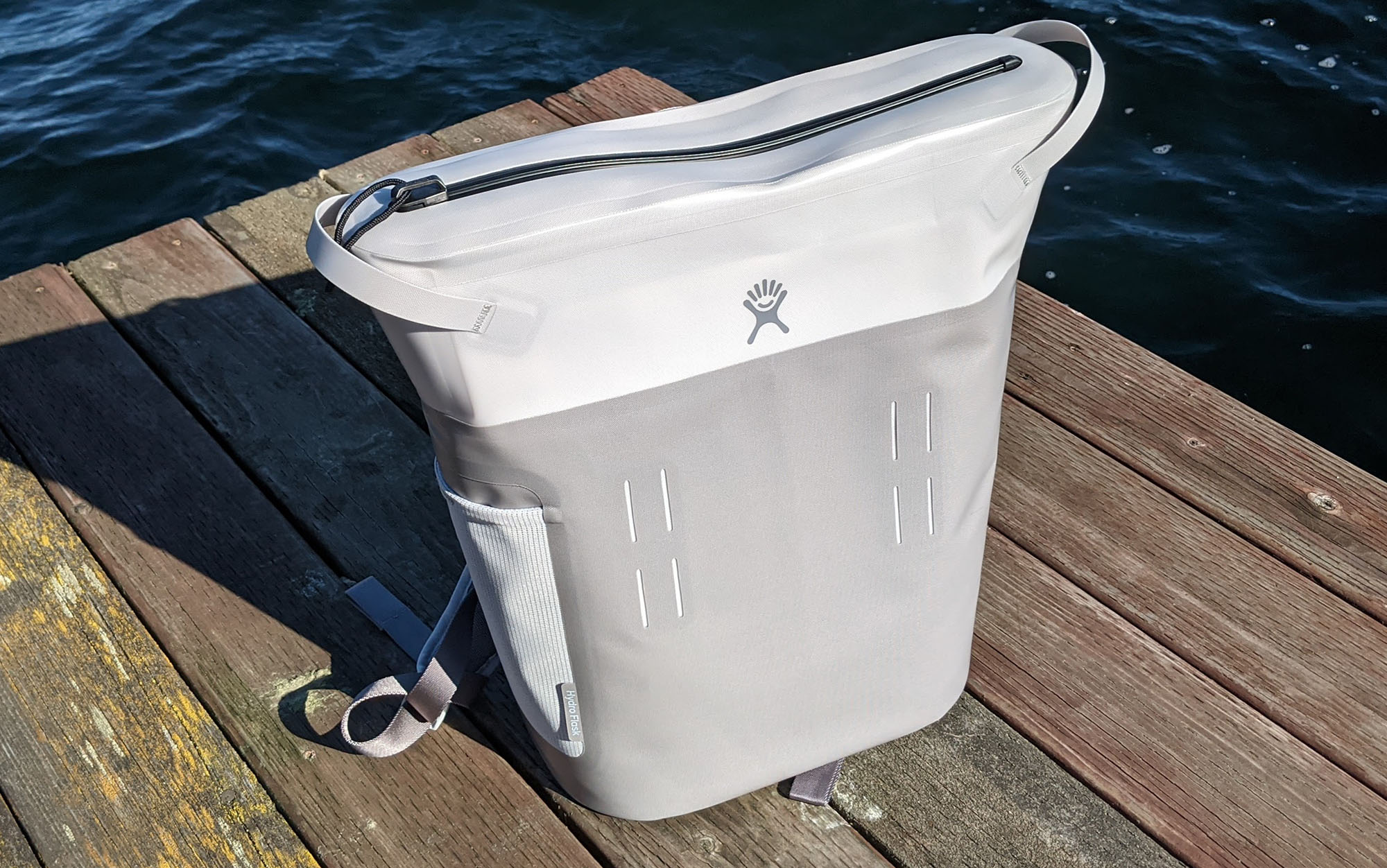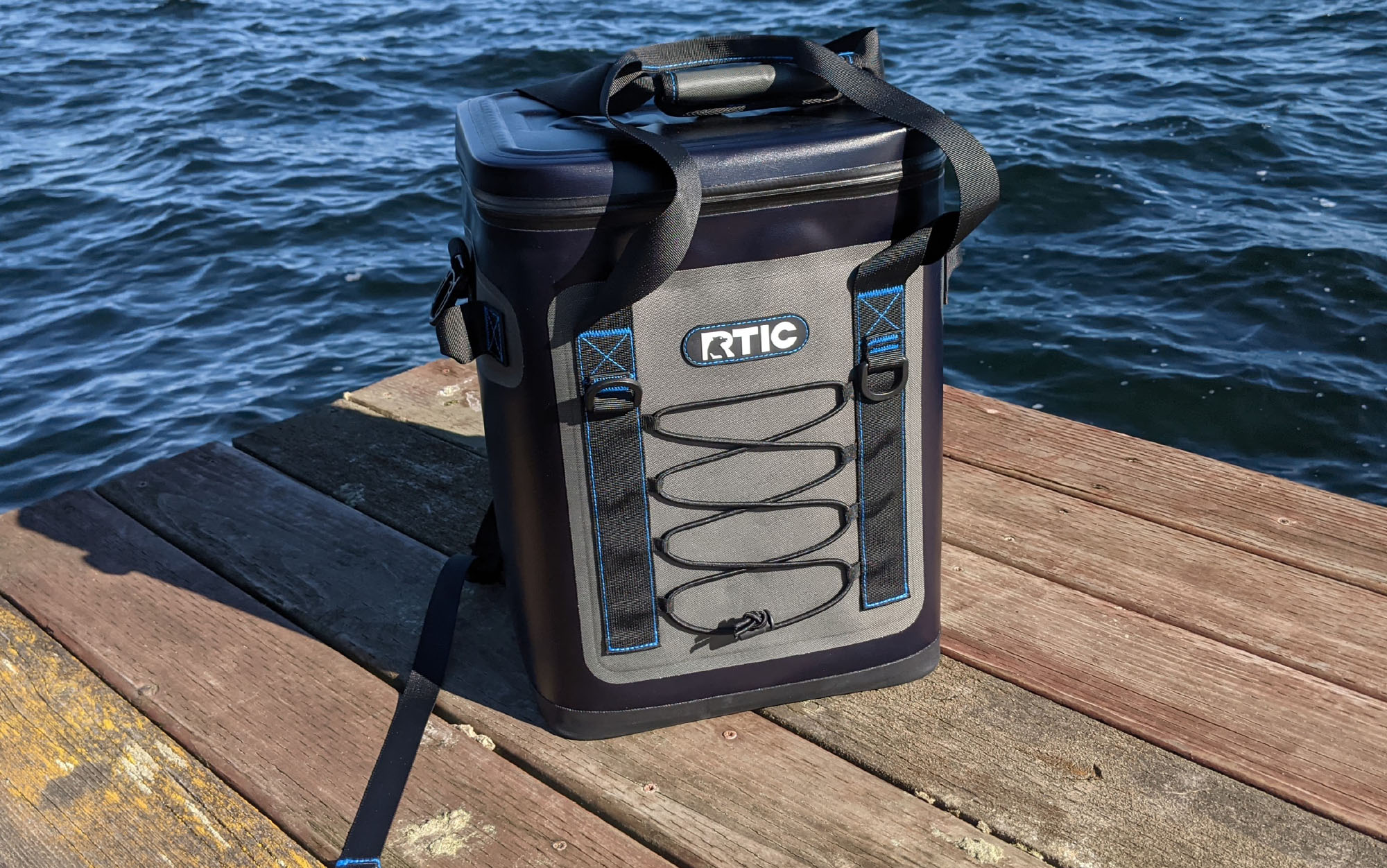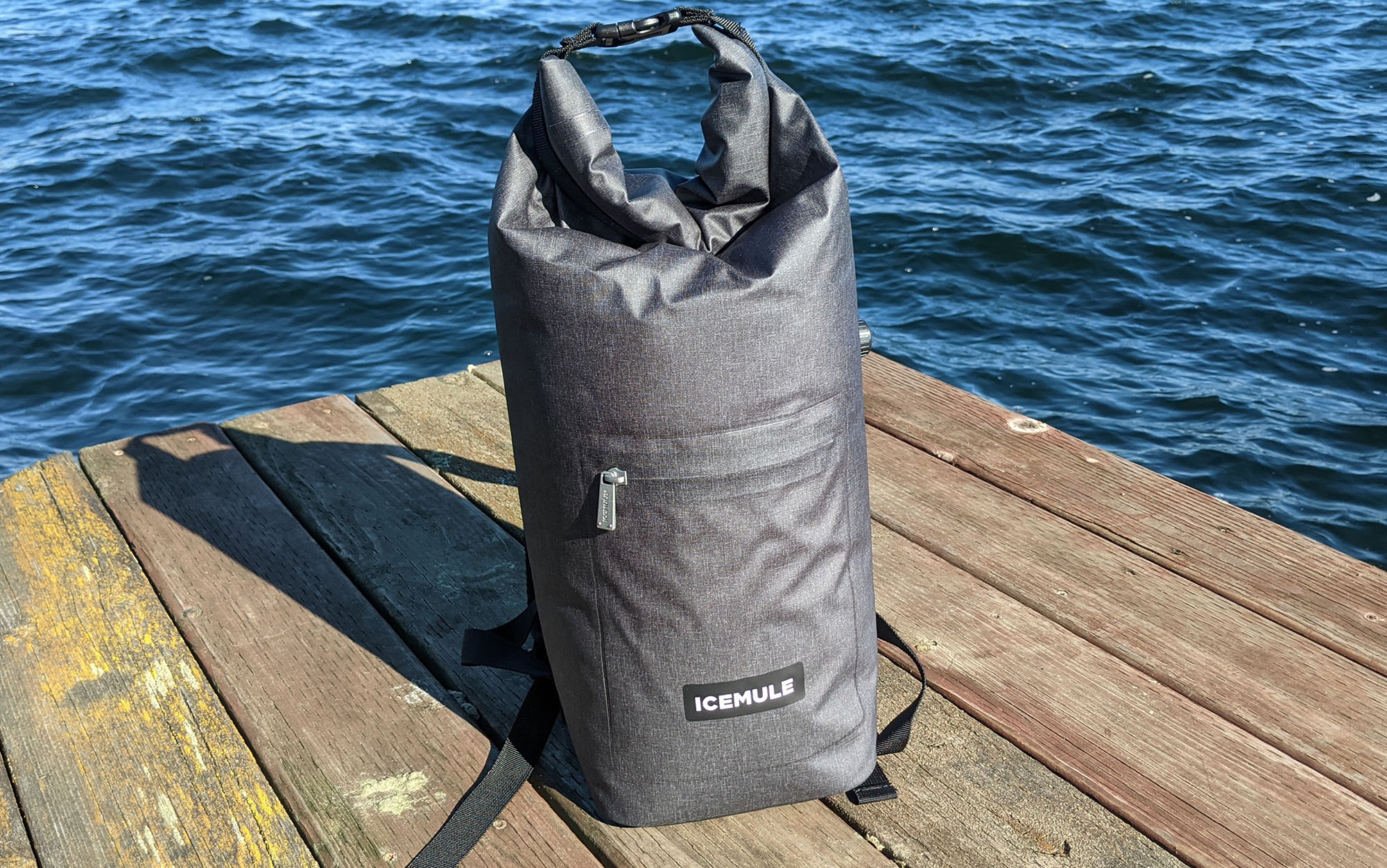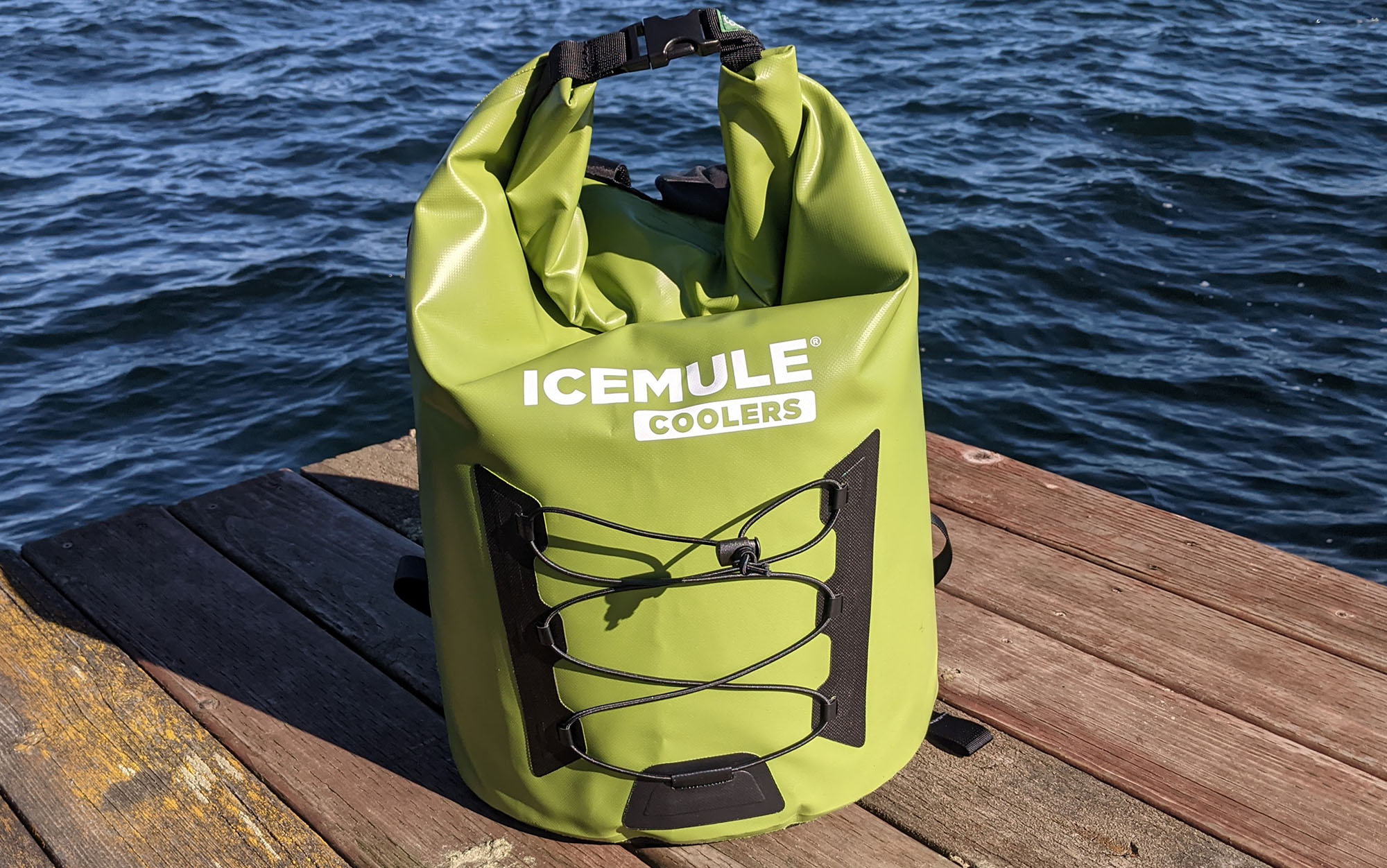We may earn revenue from the products available on this page and participate in affiliate programs. Learn More ›
The only thing better than cracking open a celebratory beer at the apex of an all-day peak bagging expedition is if said beer has been chilling in a backpack cooler. To help you find the right balance between comfort, weight, and insulation capabilities, I checked out models from RTIC, Hydroflask, and Icemule. After extensive testing, here are my picks for the best backpack coolers.
| Backpack Cooler | Price | Weight | Closure | Capacity | Waterproof Test | Insulation Test |
| RTIC Soft Pack | $160 | 3.7 pounds | Zip closure | 20 liters | Yes | 48 hours |
| Hydroflask Day Escape | $200 | 2.6 pounds | Zip closure | 20 liters | Yes | 48 hours |
| Icemule Pro Large | $135 | 3.2 pounds | Roll top | 23 liters | No | 48 hours |
| Icemule Jaunt Small | $90 | 1.5 pounds | Roll top | 9 liters | No | 72 hours |
Testing the Best Backpack Coolers
Perhaps the most important test for a backpack cooler is its insulation. To assess this, I added a 5-pound bag of ice to each cooler and then left them in moderate temperatures (mid to upper sixties), checking every twenty-four hours to see whether or not the ice had melted. I recorded the time at which all that was left in the backpack was a puddle of water.
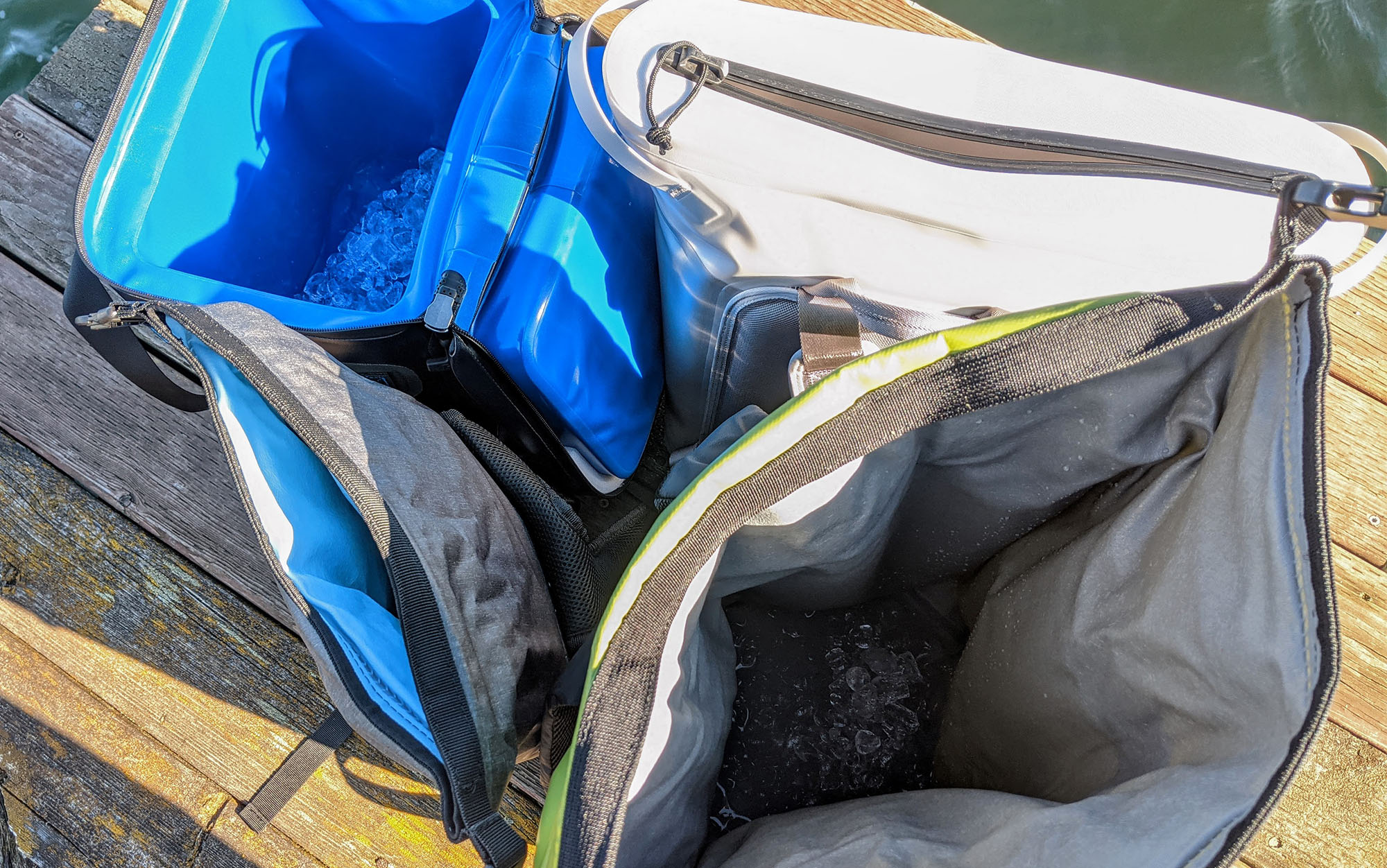
I looked at the waterproofing of each backpack cooler by tipping them in all directions and leaving the backpack coolers upside down for an hour. In addition, I also looked at the comfort and adjustability of each backpack. Finally, I took additional features, such as pockets or haul handles, and price into consideration.
Certain popular models of backpack coolers, such as the YETI Hopper and Camelback Chillback, were not included in our test due to availability issues.
The Best Backpack Coolers: Reviews & Recommendations
Most Comfortable: Hydroflask Day Escape
Key Features
- Capacity: 20 liters
- Weight: 2.6 pounds
- Insulation Test: 48 hours
Pros
- Very comfortable to carry
- Waterproof
- Mesh pocket
Cons
- No hip belt
- Comparatively expensive
The Hydroflask Day Escape was my pick for “most portable” in our roundup of the best small coolers, and it held its own against the other backpack coolers in my test, winning top marks for comfort. This is in large part due to its shape: It has a wider frame, with less depth, which holds the weight closer to your body than models that were free form or structured like a traditional cooler.
While the backpack had (just) enough structure to support a heavier load, the lack of hip belt means that you should resist the urge to fully load this one up before heading out on a longer hike. One feature common to backpacks but not to backpack coolers that the Day Escape included was a haul handle, which is handy for at-home storage.
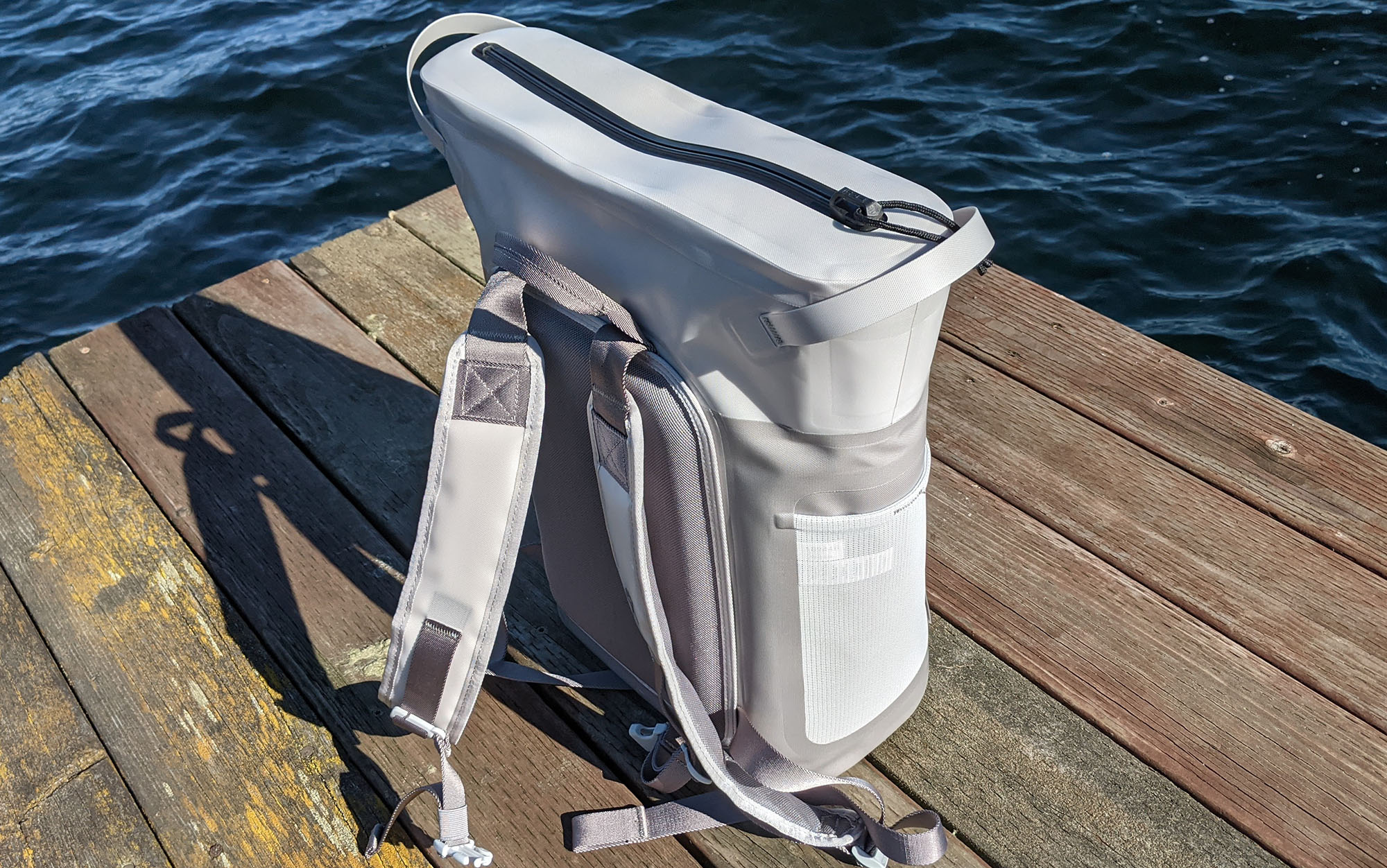
In addition to being comfortable, the Hydroflask Day Escape also has all the hallmarks of a great backpack cooler, being fully waterproof and holding ice for forty-eight hours during my insulation test. I also liked that it had an outside mesh pocket—useful for stashing small items or needing somewhere to stick your trail beer on the go.
Most Versatile: RTIC Soft Pack
Key Features
- Capacity: 20 liters
- Weight: 3.7 pounds
- Insulation Test: 48 hours
Pros
- Can be carried like a typical soft cooler or a backpack
- Easy to organize
Cons
- Less comfortable than other backpack coolers
- Bulky to store
If you’re on the fence about the need to own a backpack cooler—plenty of both small coolers and the best camping coolers can be easily navigated short distances—then the RTIC Soft Pack Backpack Cooler is a great compromise. It has both the convenience of a backpack cooler and the easy-to-use structure of a typical soft cooler, including haul handles. While other backpack coolers I looked at were relatively freeform, expanding or shrinking in size depending on what you put in them, the RTIC is very structured. However you put your beverages into the cooler, they are likely to stay that way.

While that made items relatively easy to find during testing, it made actually carrying the cooler slightly less comfortable than with other models. This is because the weight of the RTIC Soft Pack, which can be pretty significant if you load it up, is held further away from your body, putting additional pressure onto your shoulders and potentially offsetting your balance.
Best Insulation: Icemule Jaunt
Key Features
- Capacity: 9 liters
- Weight: 1.5 pounds
- Insulation Test: 72 hours
Pros
- Affordable
- Lightweight
- Roll-top minimizes space during storage
- Zip pocket at front
- Great insulation
Cons
- No padding at the back panel
- Not fully waterproof
If you’re hiking in hotter climes, odds are you’re looking for something between a backpack and a backpack cooler to help keep your lunch and snacks for the day at a reasonable temperature. That’s what the Icemule Jaunt is. It’s small; it’s affordable. It’s not flashy. But it has great ice retention (the best of my test, lasting 72 hours) and has plenty of space for drinks and food for two people. It also packs down small thanks to the inflatable insulation, the roll-top closure, and the lack of formal structure.
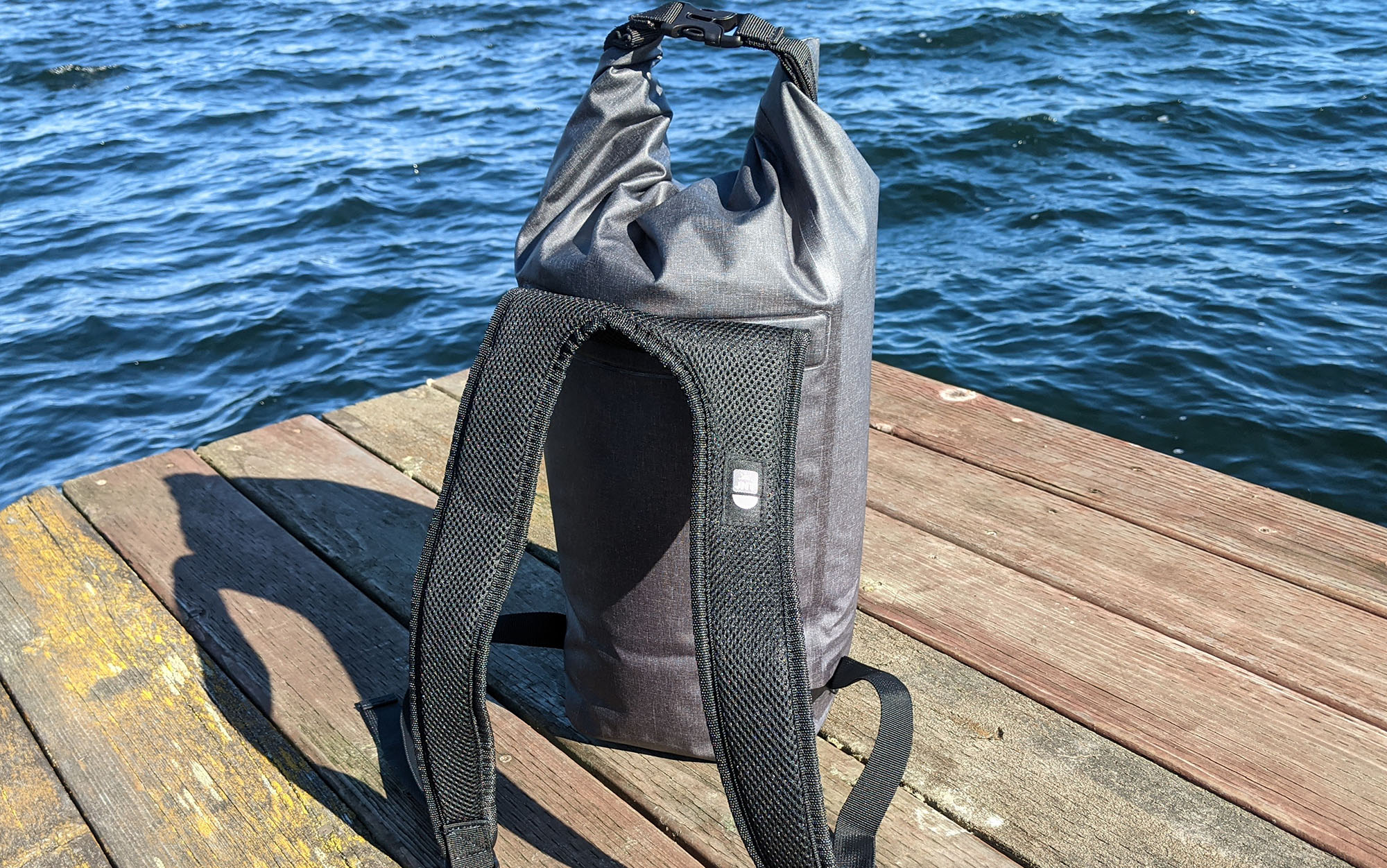
While the Jaunt does have a zip pocket at the front, it would benefit from a few more storage pockets on the side to hold other hiking essentials. Since it lacks an internal structure or padding on the back side, this one is also going to need a bit more care in packing to make sure there isn’t something poking into your back en route. The roll-top style also turned out to be less waterproof than the zip models, leaking water when left upside down for more than a few seconds.
Best Value: Icemule Pro Large
Key Features
- Capacity: 23 liters
- Weight: 3.2 pounds
- Insulation Test: 48 hours
Pros
- Large capacity for the price
- Padded back panel
- Roll top closure
Cons
- Less comfortable to carry
While Icemule (rightly) gets plenty of accolades for their Boss model—the only backpack cooler I’ve run across that actually looks like a day pack—don’t overlook the Icemule Pro, which provides plenty of insulation at a third of the price. It held ice for 48 hours—more than enough time for weekend camping or boating adventures. Like the Icemule Jaunt, it wasn’t fully waterproof, so be careful to carry and store this cooler upright, especially when the icemelt starts to accumulate.
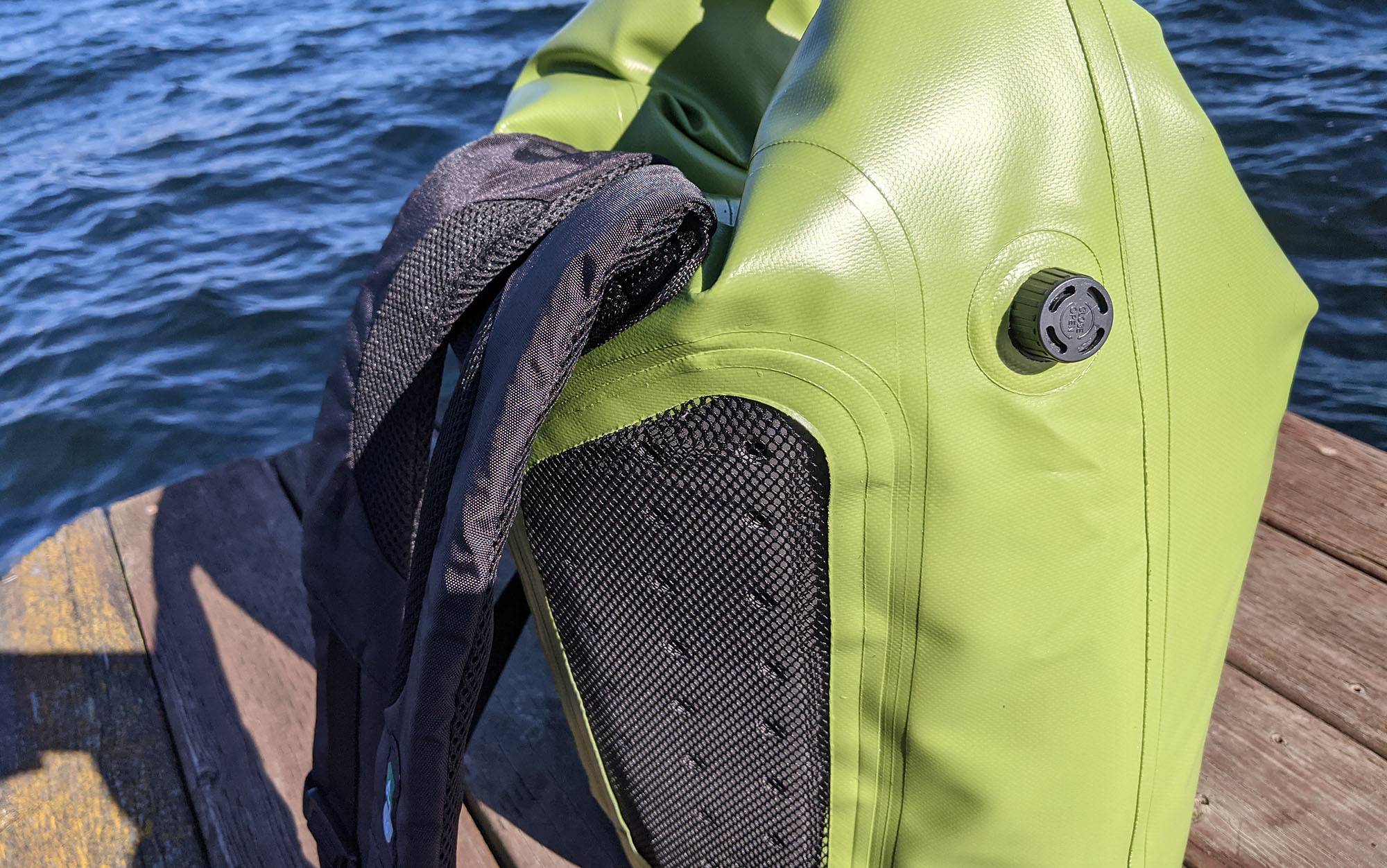
While I wish that the Icemule Pro had a substantial hipbelt to help when carrying larger, heavier loads, which the capacity of the Pro supports, it does have padding along the back panel, which helps to alleviate the load for shorter distances. Despite its oversize appearance, the Icemule Pro also packs down surprisingly small, thanks to the roll-top closure and deflatable insulation.
How to Choose the Best Backpack Cooler
Weight
While weight can mean the difference between having a pleasant dayhike and a true sufferfest, the majority of the weight of a backpack cooler is in its contents, rather than the weight of the backpack cooler itself—remember, a liter of water weighs 2.5 pounds. If weight is a major concern, look at chilling your beverages before you add them to your backpack to save on ice weight.
Capacity
The larger the capacity of your backpack cooler, the more ice you’ll need to keep the same area cool. Choose a smaller capacity if you’ll be carrying beverages for yourself and a couple of friends, while larger backpack coolers can be handy if you’re planning an all-day hang at the beach.
Waterproofness
More likely than not, your backpack cooler will be full of ice (rather than one of the best ice packs for coolers), which, as it melts, can make a huge mess if you’re not careful to place it upright. Look for a backpack cooler that is fully waterproof to ensure that the rest of your gear stays dry.
Comfort
If you’re looking to purchase a backpack cooler, more often than not you’re planning to hoof more than 20 yards between your car and the picnic table. While none of the backpack coolers had the waistbelts or structure that provide the load-bearing capacity of backpacking backpacks, there were noticeable differences in the level of cushion and adjustability to take into consideration before making a purchase.
FAQs
Q: What should I look for in a backpack cooler?
Look for backpack coolers from top cooler manufacturers, like Yeti, RTIC, Igloo, and Icemule, to ensure you get best-in-class insulation for your ice, cold packs, and beverages.
Q: Can I put ice in my backpack cooler?
Yes, you can put ice into a backpack cooler as long as it’s waterproof.
Q: How should I clean and store my backpack cooler?
To clean and store your backpack cooler, first ensure it is clean and free of any spills or sticky spots, using a mild detergent where necessary. Next, wipe down the interior until it is completely dry. Finally close the lid but do not fully zip it, to avoid unwanted odors building up on the inside of your backpack cooler during the down season.
Q: Are backpack coolers heavy?
While backpack coolers are not in and of themselves especially heavy, the weight of both ice and cans quickly adds up. Further, none of the backpack coolers I looked at had the load-bearing capacity of the best backpacks. If weight is a primary consideration for your backpack cooler, it may be best to look at a wheeled version of one of the best camping coolers.
Why Trust Outdoor Life?
Since 1898, OL has been a leading authority in testing and reviewing hunting gear, fishing tackle, guns and shooting equipment, and much more. We have more than a century-long history of evaluating products, and we’re now bringing that expertise to online reviews. Our editors are experienced outdoorsmen and women, and most importantly, we’re trained journalists. We prioritize field testing and objective data when reviewing products. We conduct interviews with gear manufacturers and engineers as well as outdoor experts so that our readers have an understanding of how and why a product works—or doesn’t.
Advertising does not influence our gear reviews and it never will. While we always focus our coverage on standout products—because we want our readers to be aware of the latest and greatest gear—we also cover the flaws and quirks of any given product.
Final Thoughts on the Best Backpack Coolers
A great backpack cooler can take a fun weekend adventure and turn it up a notch, making it something truly memorable. The below picks for the best backpack coolers are all great choices for your next trip outdoors.

